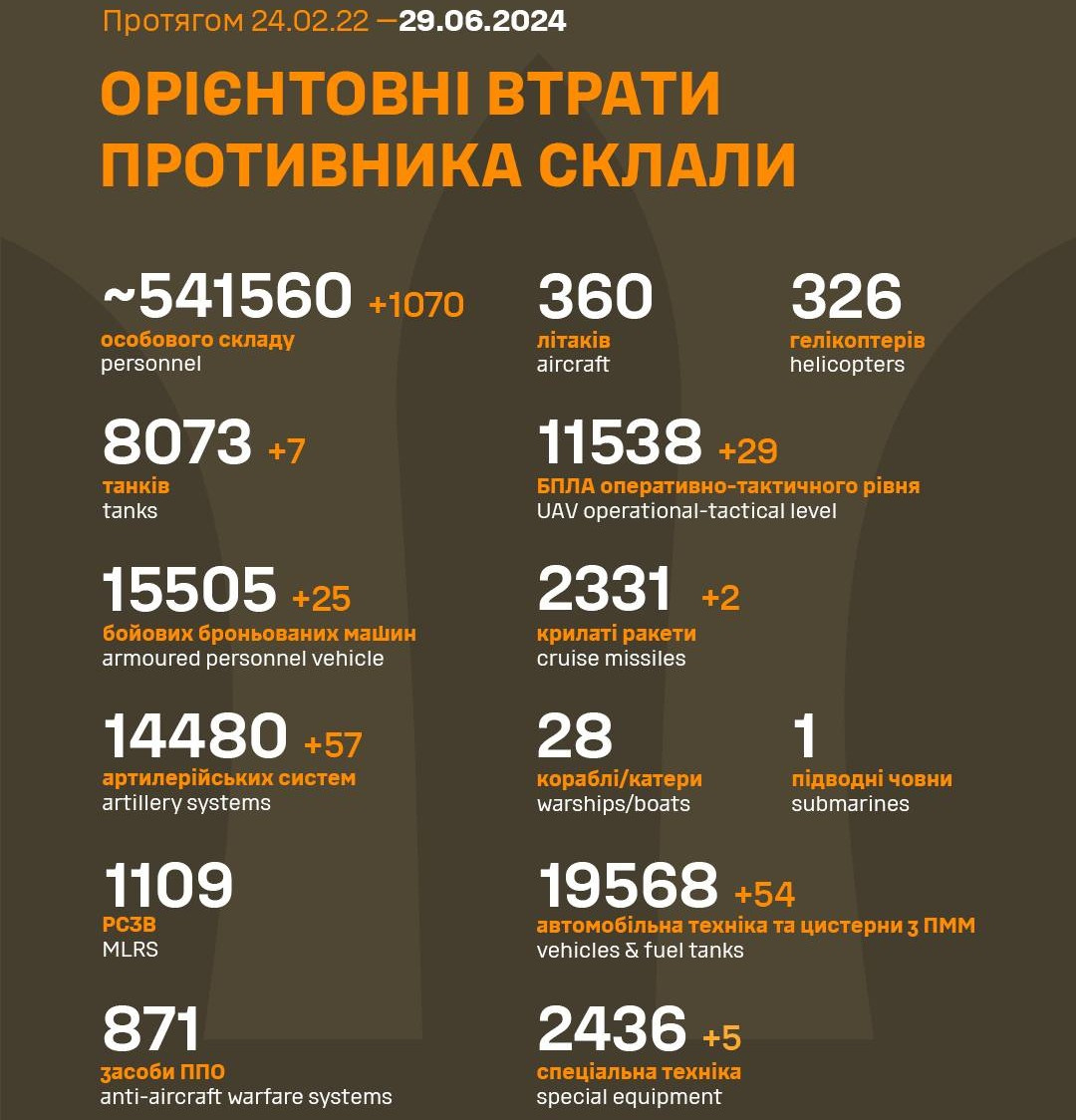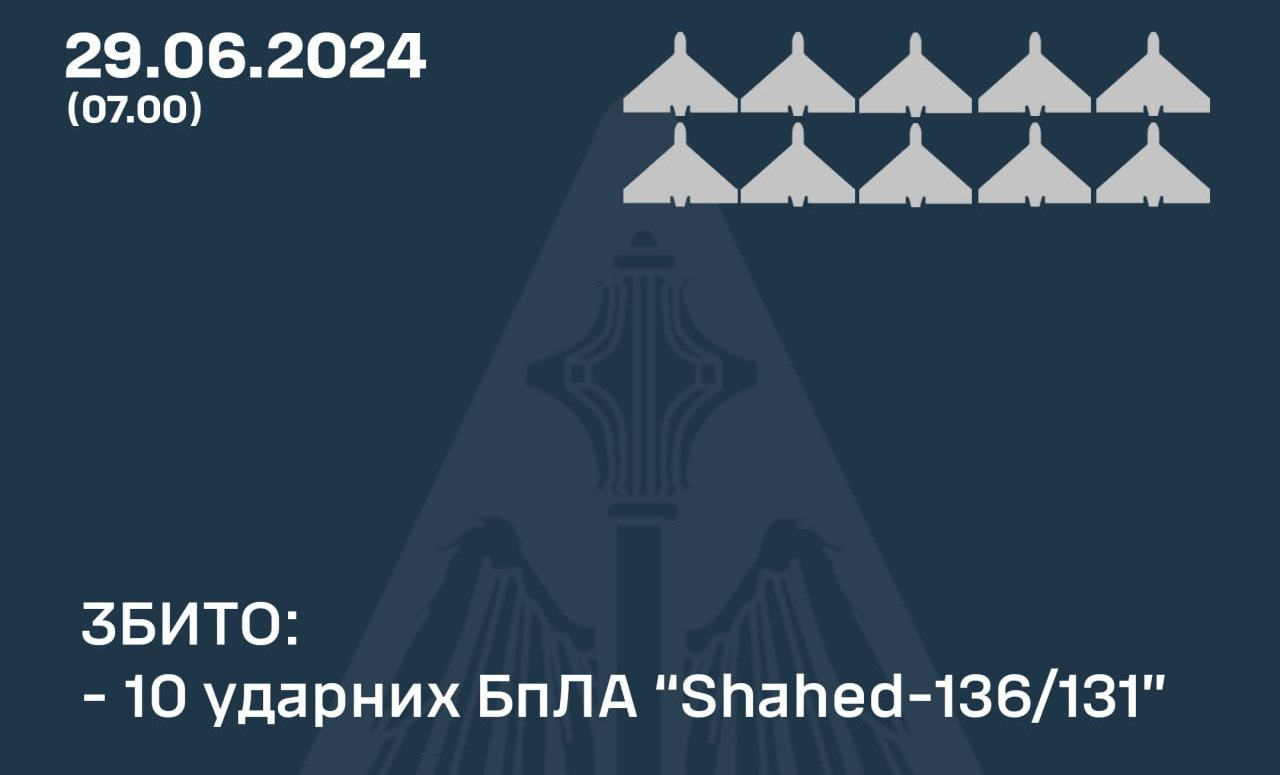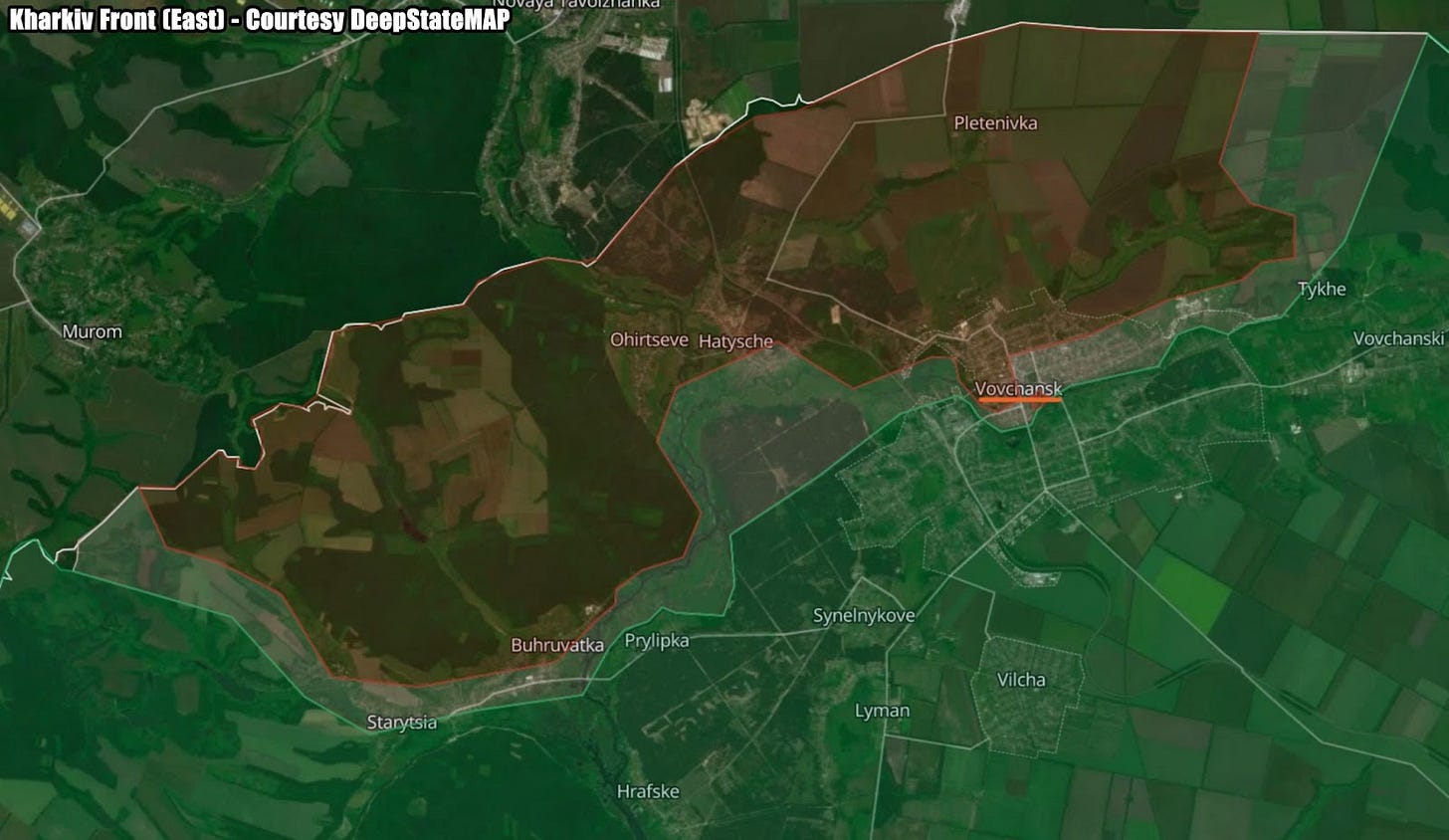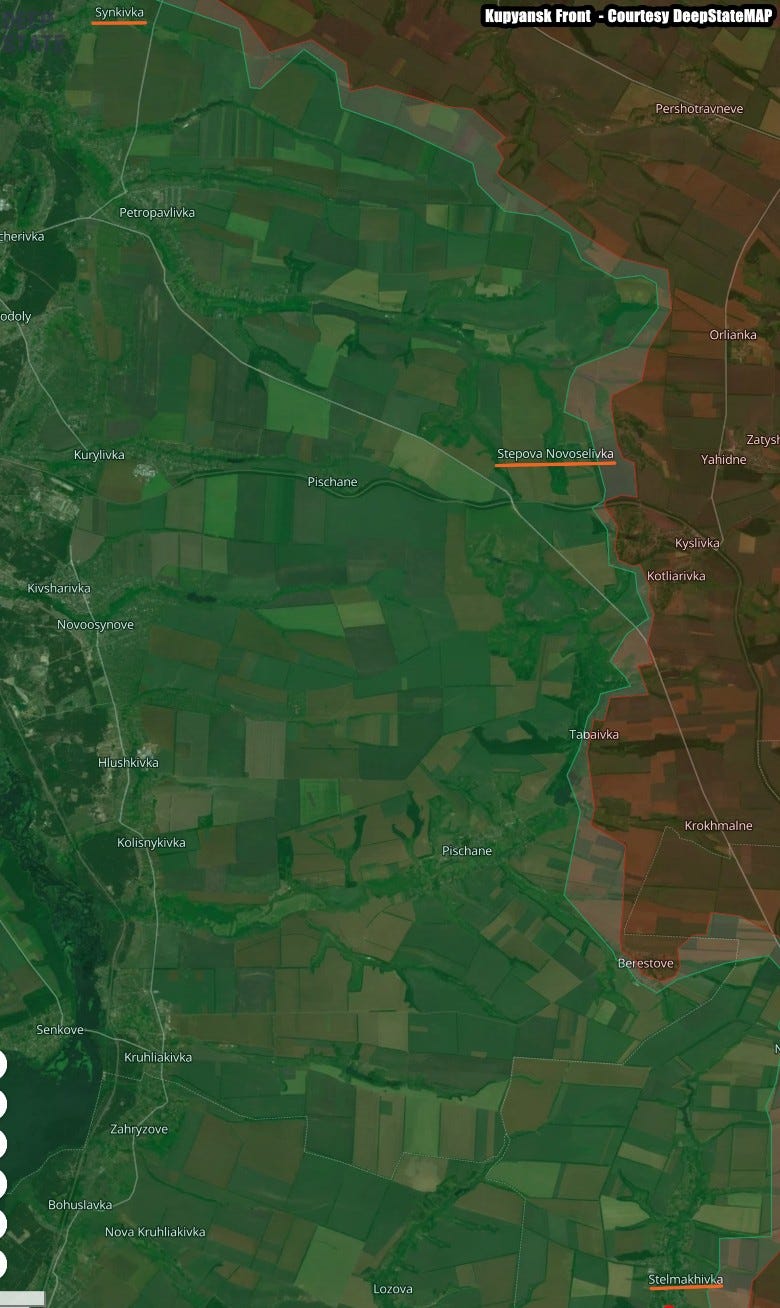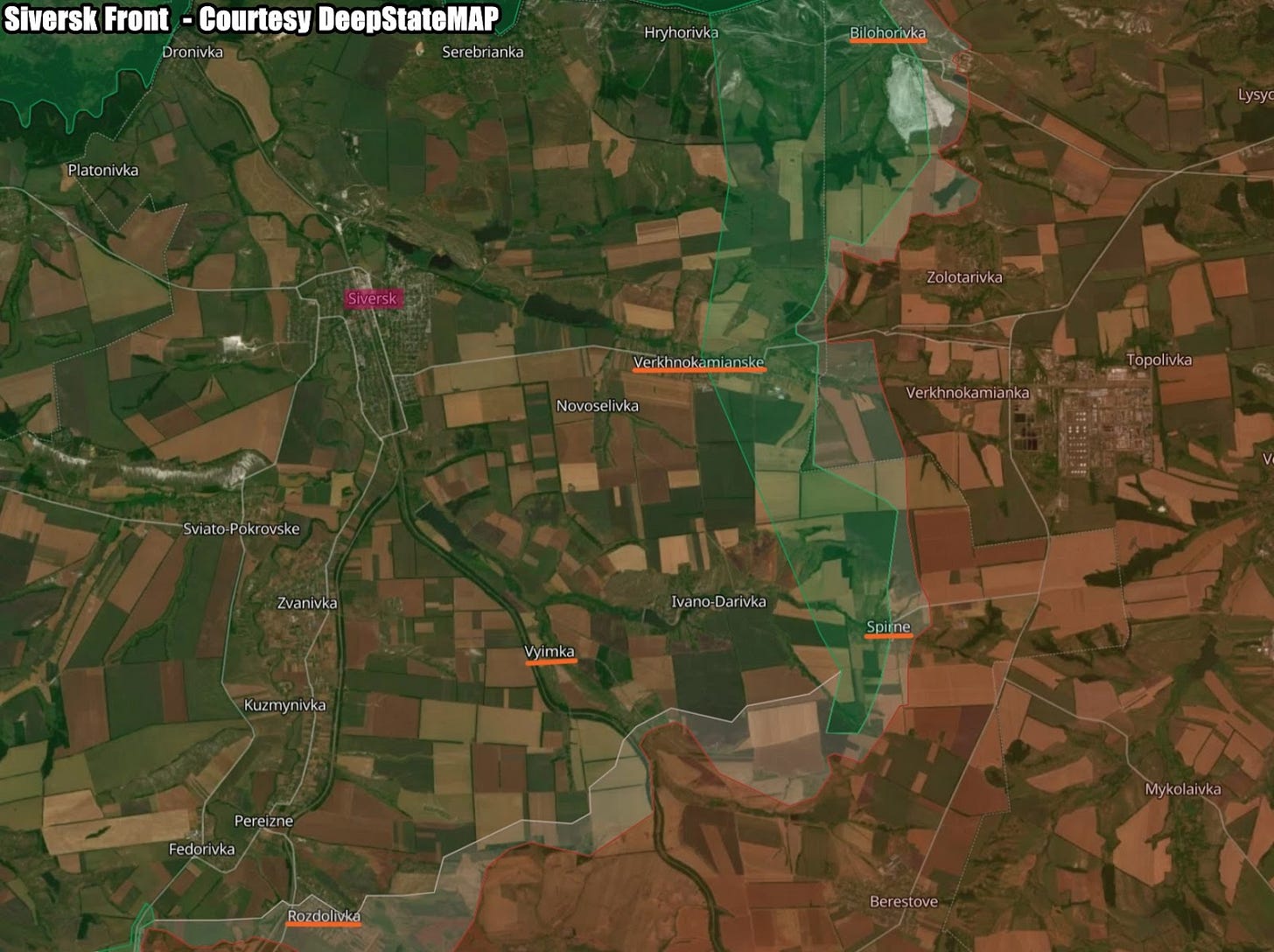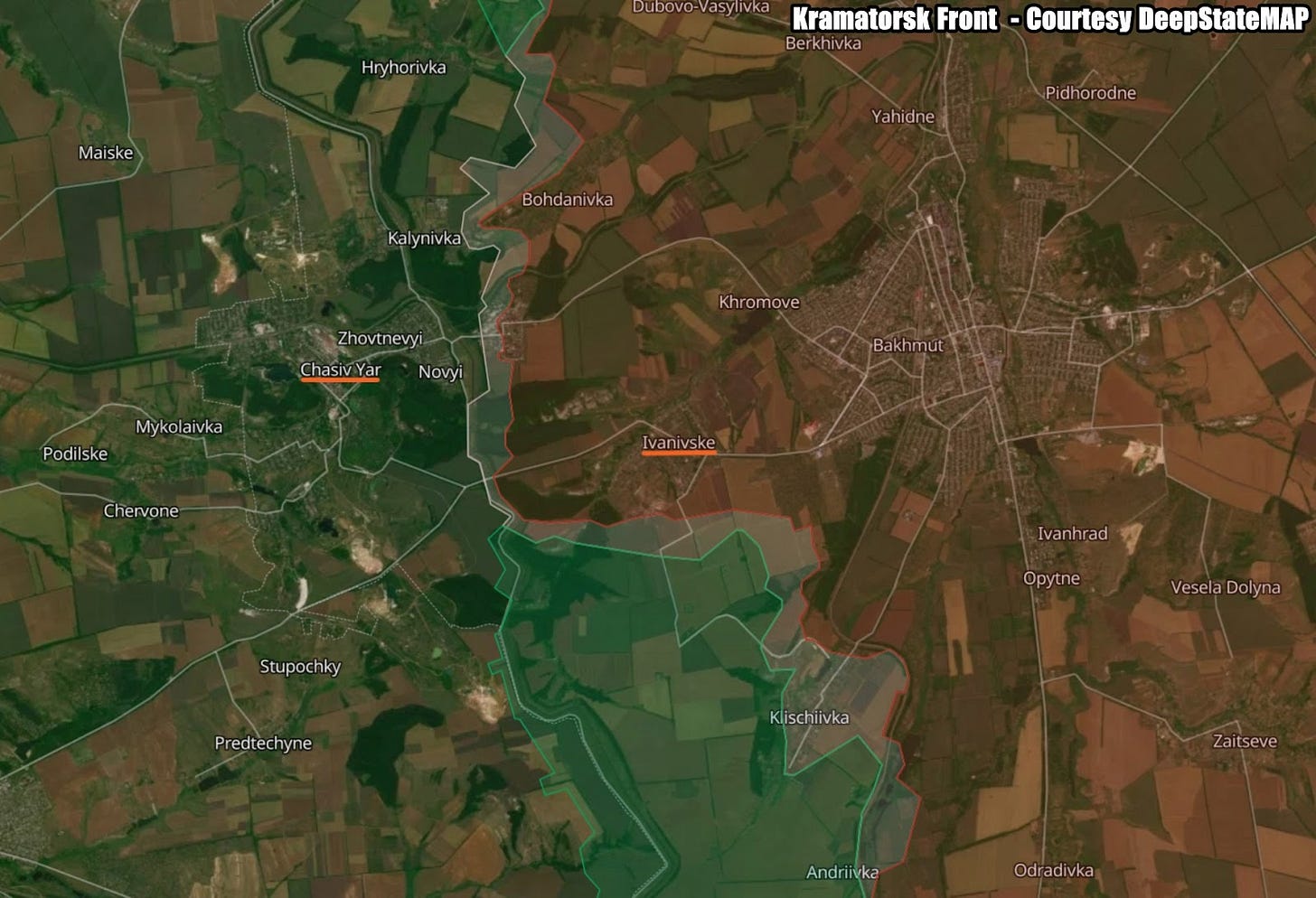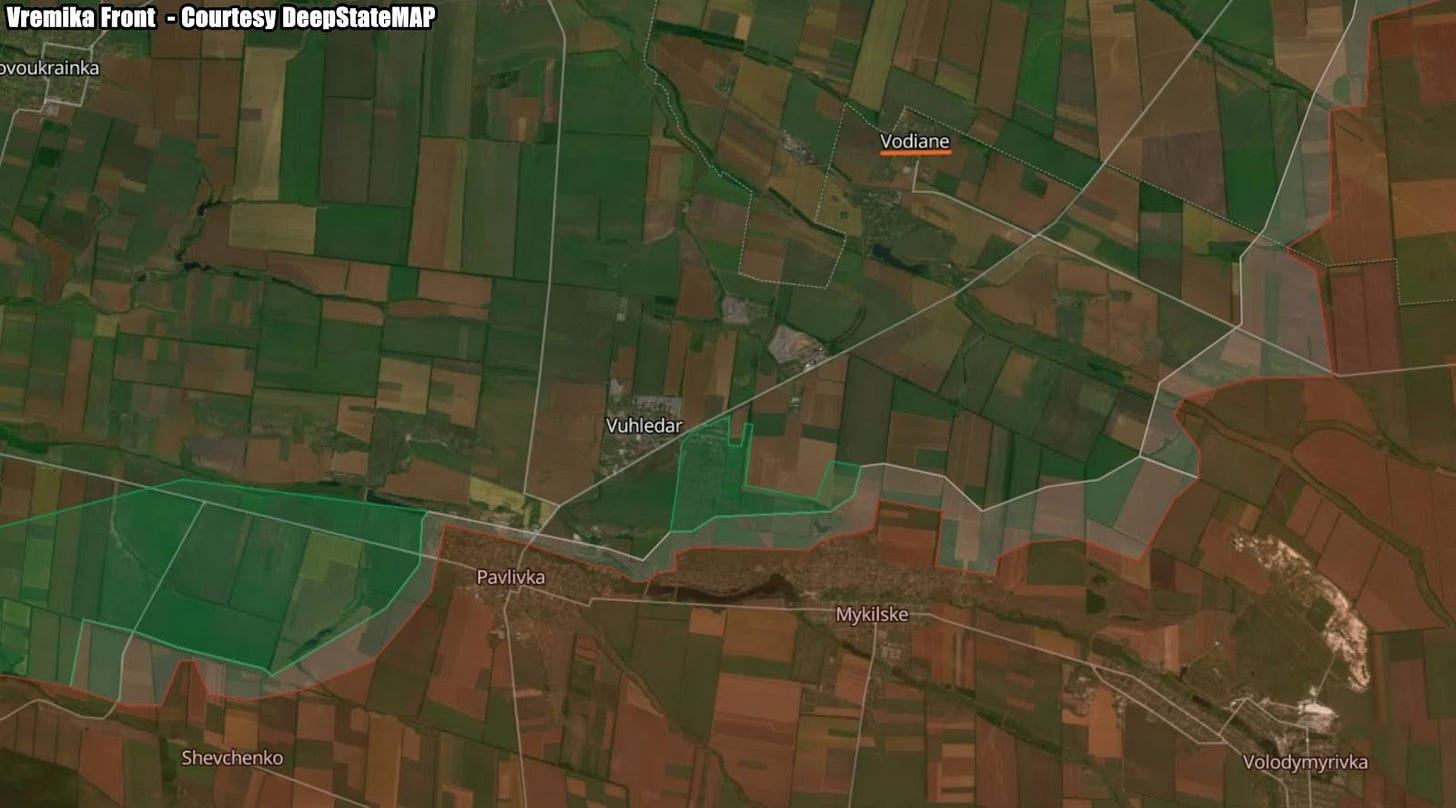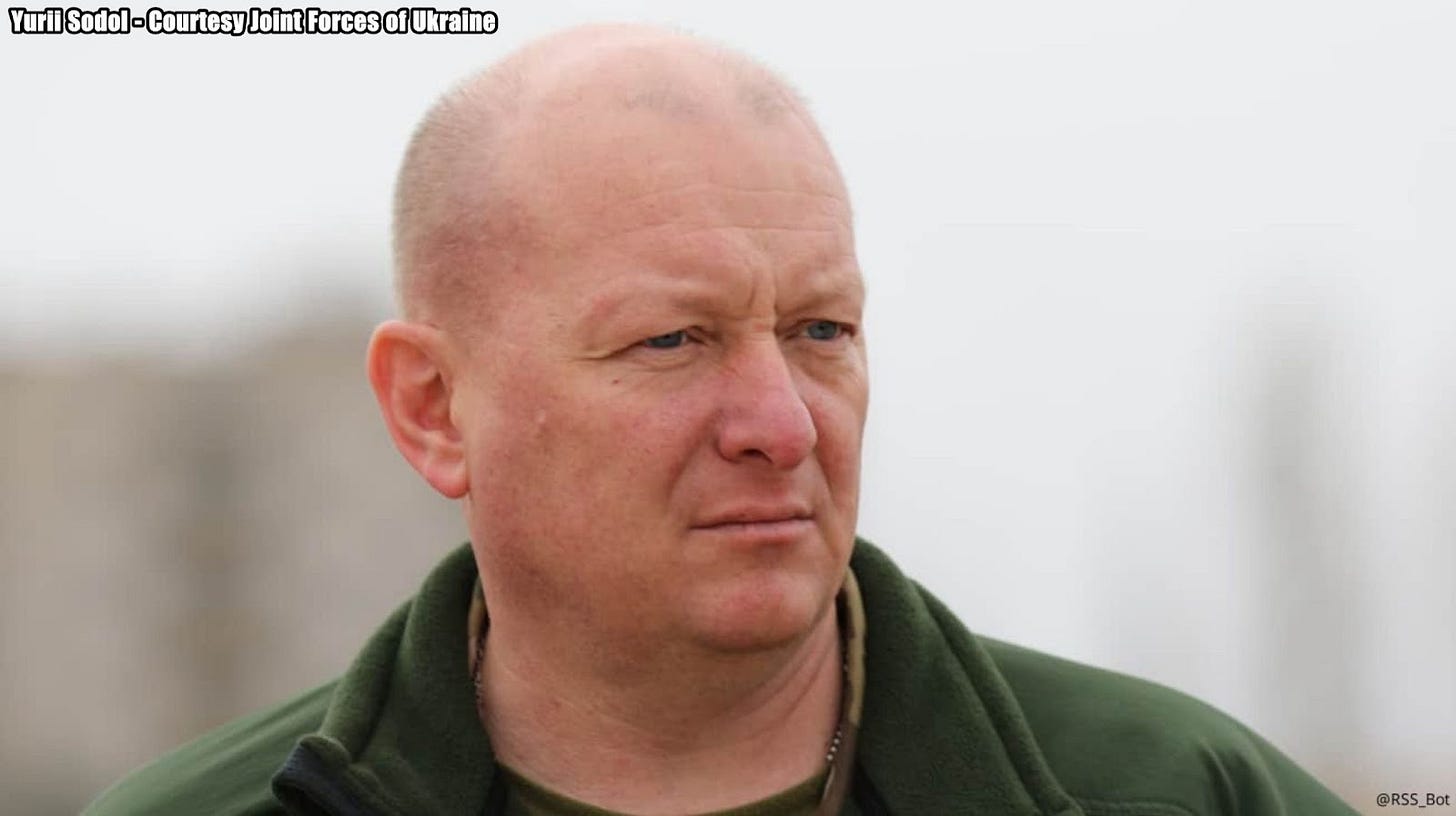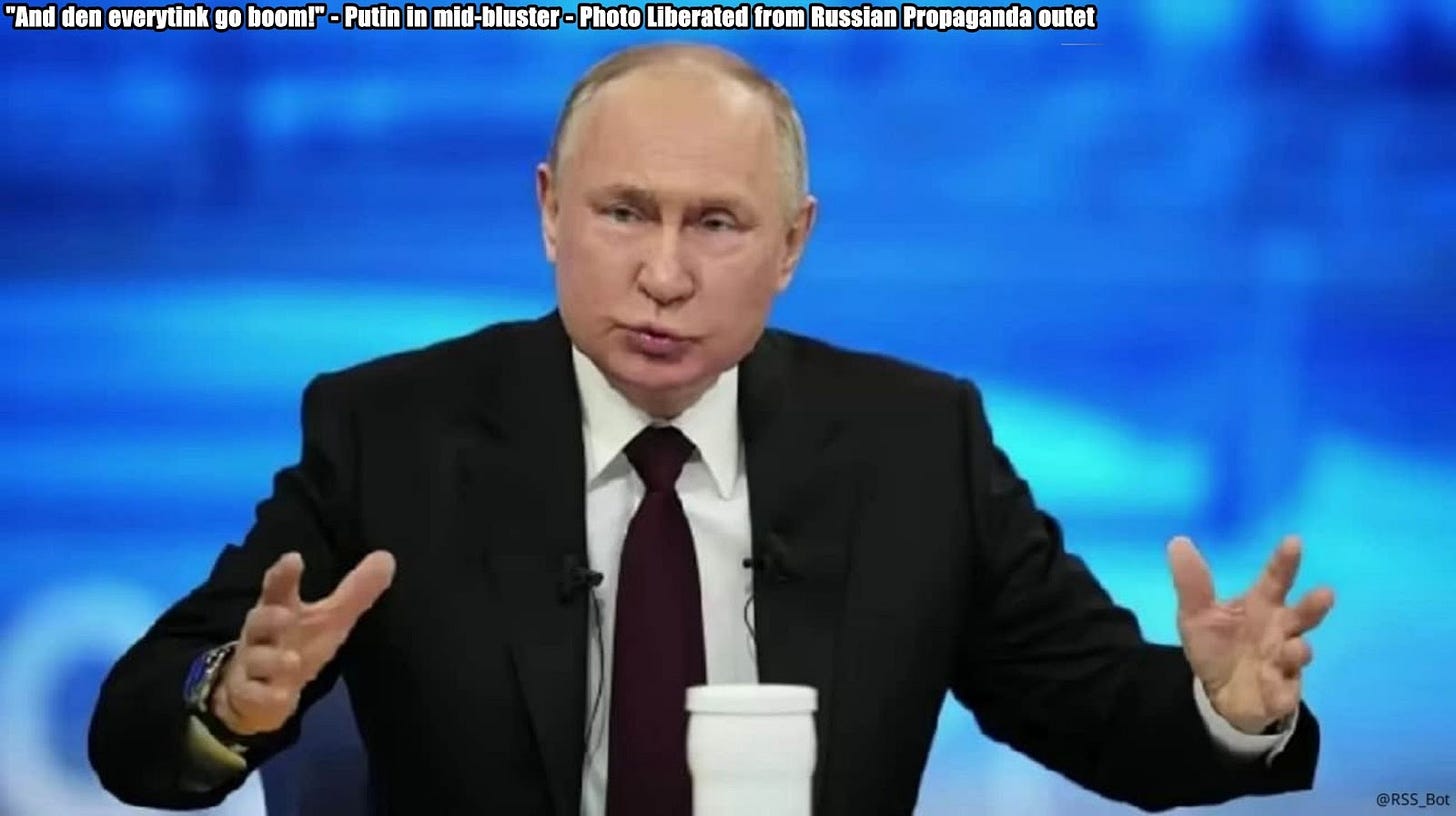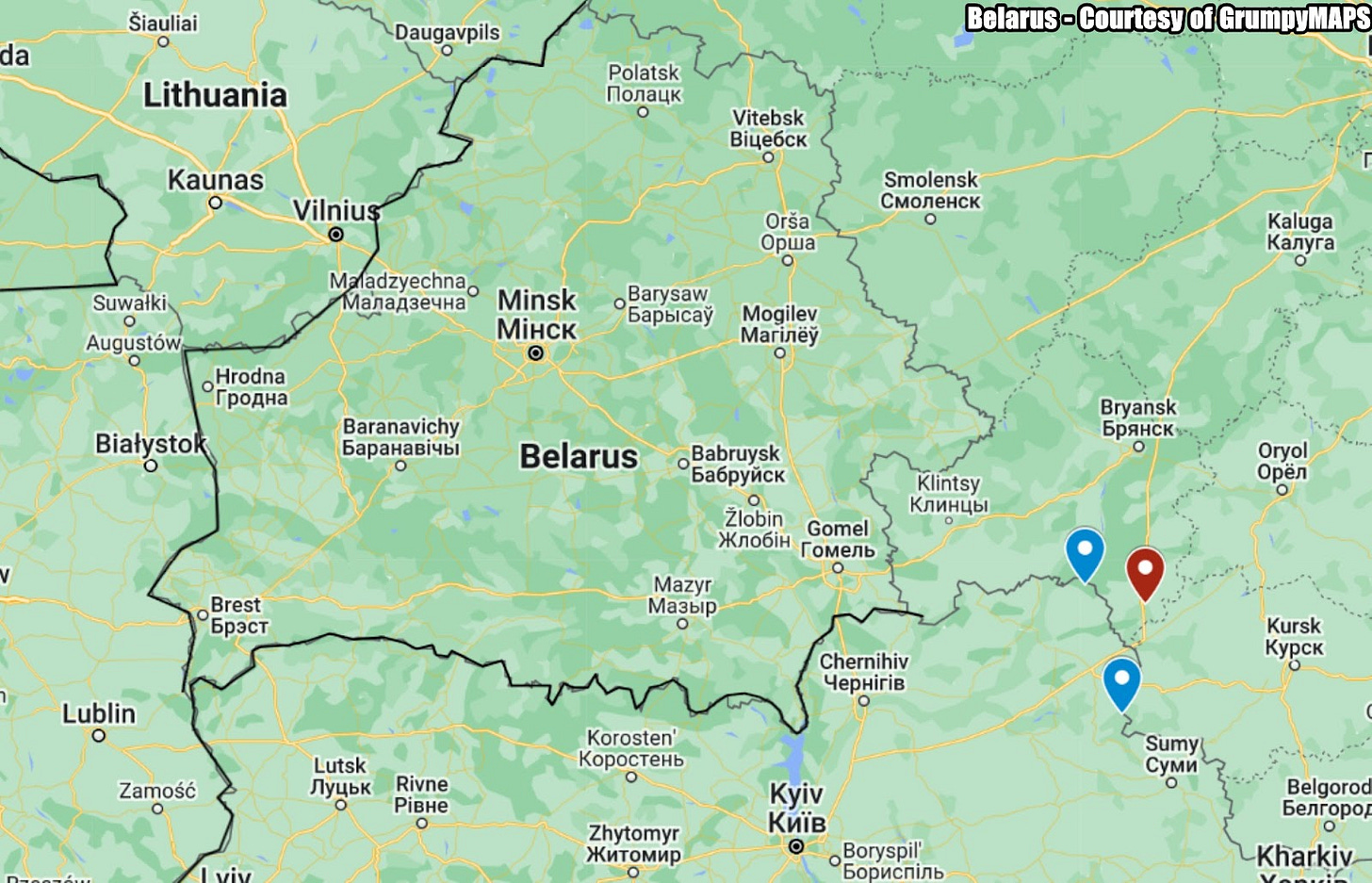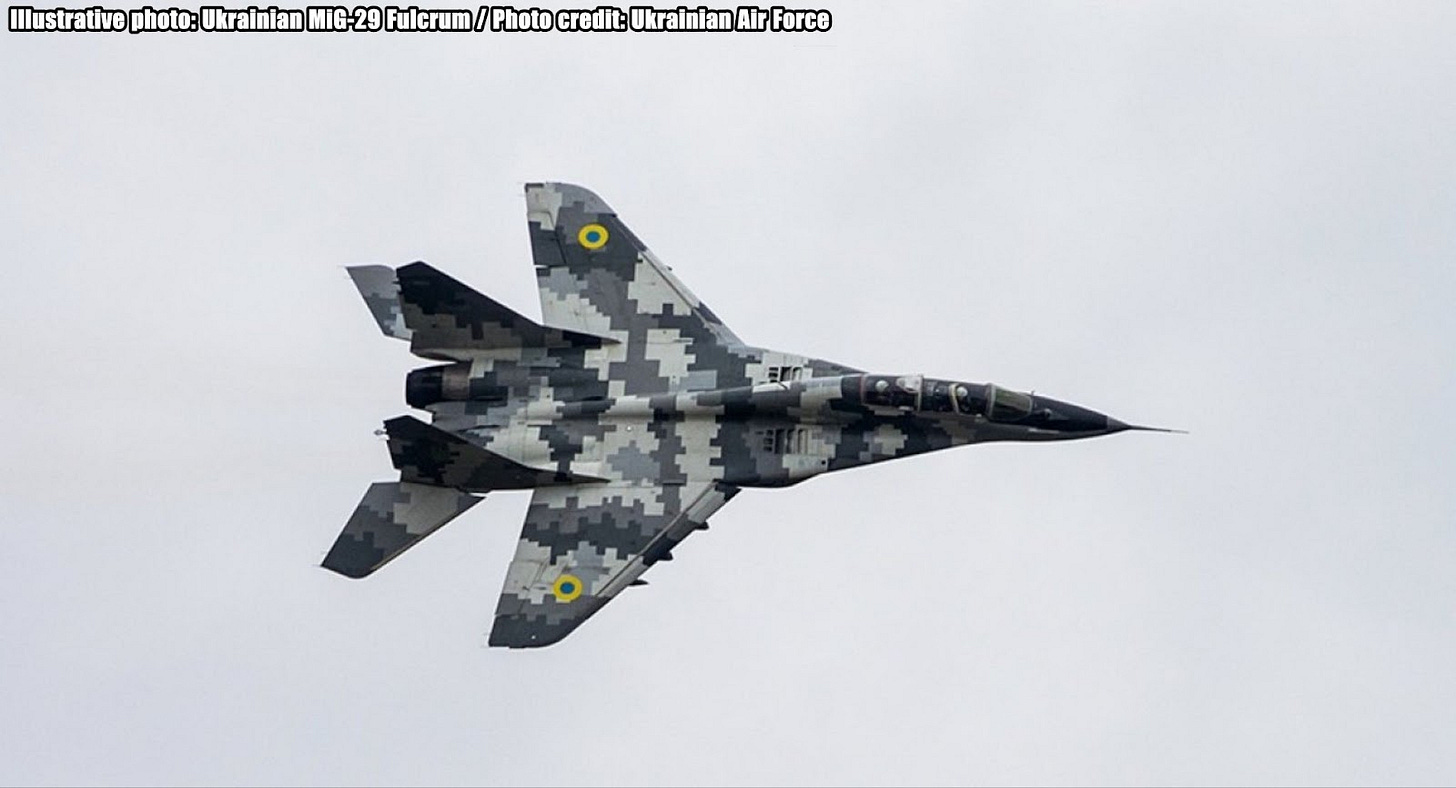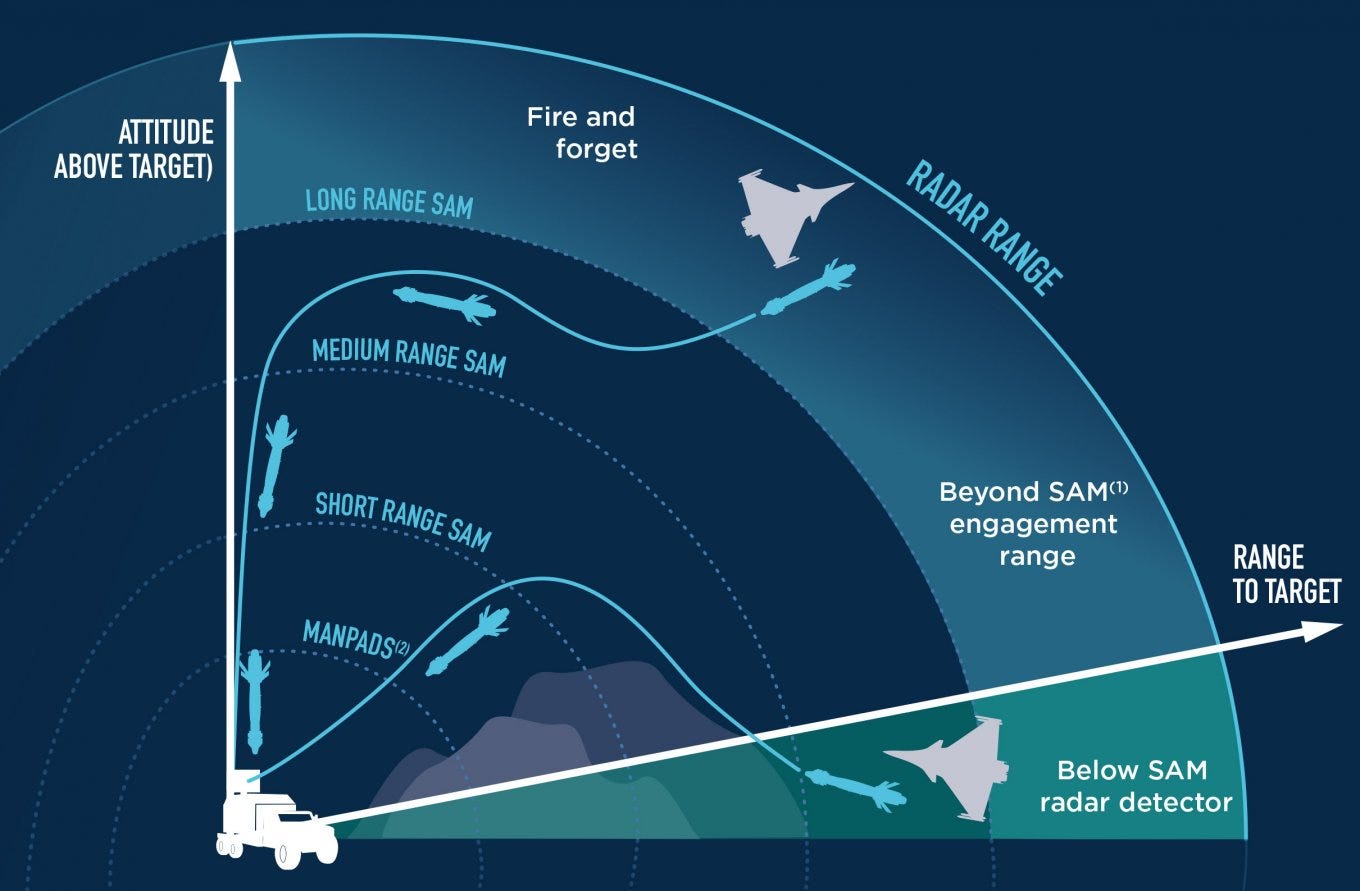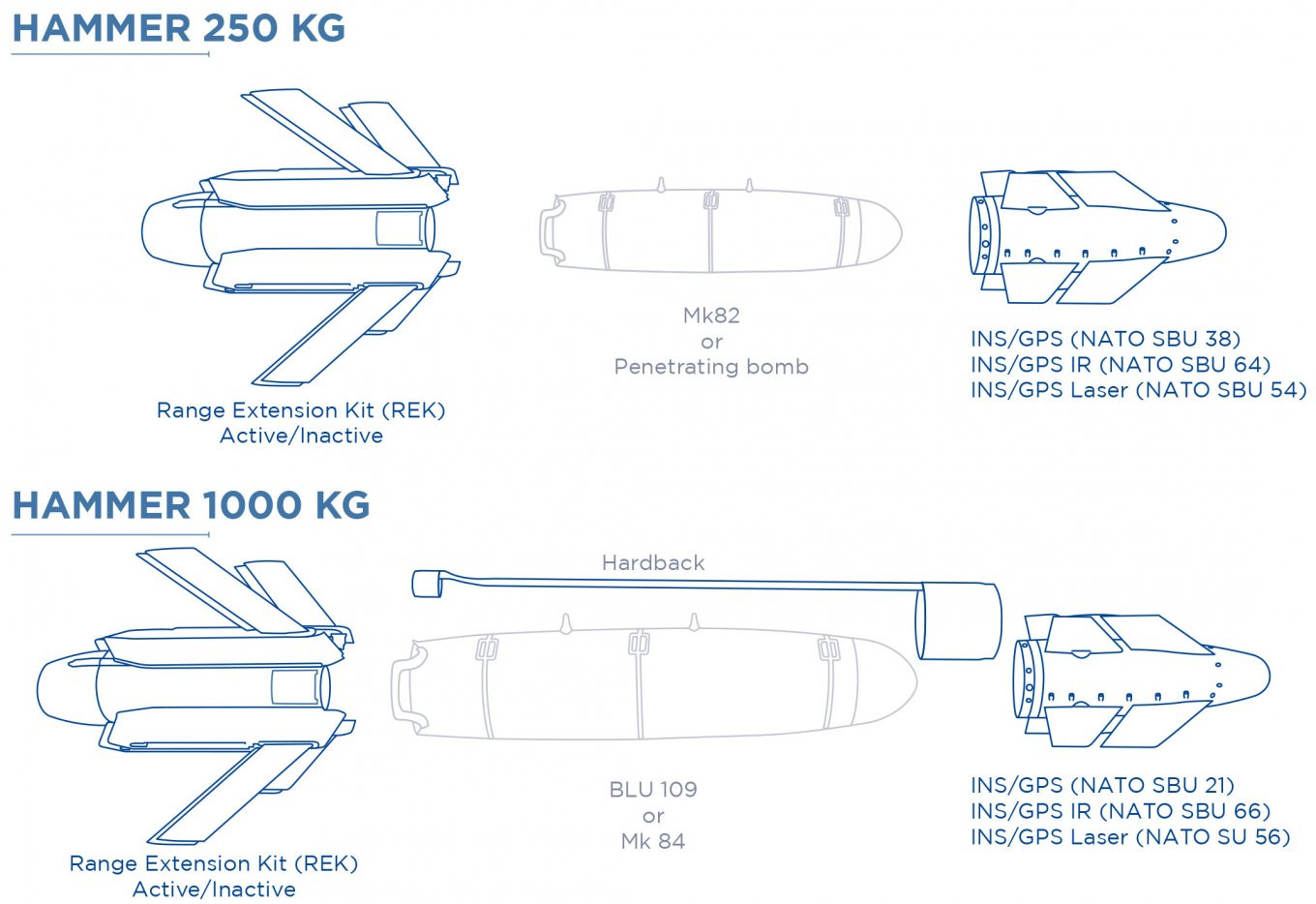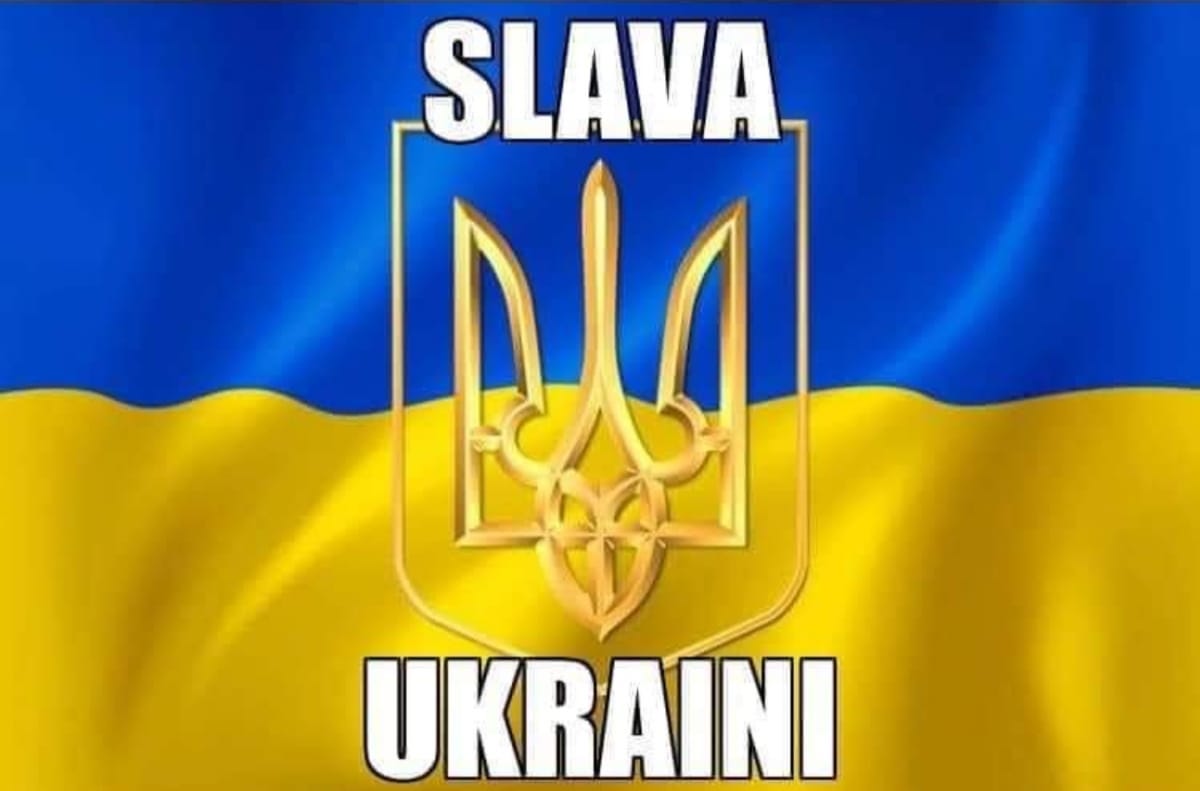Slava Ukraini! In early 2022 I began a Telegram channel aggregating news from a number of sources daily on the war in Ukraine. Since June 2023 I have provided a daily draft for the Ukraine War Brief Podcast collecting news from over 60 sources daily, much of which forms the basis of the script. While the Podcast is on hiatus I will make this Draft available here both on my own Substack and The People’s Media for those who wish to keep up with events on a daily basis.
ALONG THE CONTACT LINE
GSAFU Morning Report
The General Staff of the Armed Forces of Ukraine in its Operational Information update at 22:00 on June 28 stated that day 857 of the full-scale invasion of the Russian Federation against Ukraine was about to begin.
During the past day,140 combat engagements took place. Over the past 24 hours, the enemy carried out 0 missile strikes, 61 air strikes, 328 drone strikes and more than 3,180 artillery strikes across the positions of Ukrainian forces.
At the same time, Ukrainian soldiers continue to inflict losses in manpower and equipment on the occupying troops, exhausting the enemy along the entire front line and continue to disrupt the plans of Russian occupiers to advance deep into the territory of Ukraine.
During the day, aviation, missile troops and artillery of the Defense Forces hit 11 personnel concentration areas, four PPOs and the enemy's REB station.
Air Force Daily Report
On the night of June 29, 2024, the enemy attacked with 10 attack UAVs of the "Shahed-131/136" type from the Primorsko-Akhtarsk region - Russian Federation.
As a result of combat work by fighter aircraft, anti-aircraft missile units, calculations of mobile fire groups and EW means of the Air Force of the Armed Forces of Ukraine, all 10 "shaheed" were shot down within Mykolaiv, Kherson, Dnipropetrovsk, Kirovohrad, Cherkasy and Vinnytsia regions.
The Khortytsia operational-strategic group
(Responsible for the northeastern part of Ukraine. )
Kharkiv axis: The enemy, supported by aviation, 12 times unsuccessfully attacked in the area of Vovchansk. The situation is under control.
Ukraine drives Russian forces back in Vovchansk
The Institute for the Study of War (ISW), a US think tank, in its June 28 Russian Offensive Campaign Assessment stated that Ukrainian forces recently recaptured positions in northern Kharkiv Oblast amid continued fighting in the area on June 28. Geolocated footage published on June 28 indicates that Ukrainian forces recently advanced within central Vovchansk (northeast of Kharkiv City) along Heoriv Chornobylya Street.
A Ukrainian drone battalion commander operating in the Kharkiv direction reported on June 28 that the situation in northern Kharkiv Oblast has stabilised and that Russian forces have not made any significant progress since roughly June 12.
The drone battalion commander stated that Russian forces are using both "Storm" assault units staffed with poorly trained personnel and regular Russian units in the Kharkiv direction. The drone battalion commander also reported that Russian forces are quickly replenishing their losses in the area despite suffering heavy losses. Fighting continued near and within Vovchansk on June 28.
Elements of the Russian engineering "Phoenix" Battalion are reportedly attempting to remotely mine areas in northern Kharkiv Oblast.
Ukrainian officials recently reported on June 16 and 23 that Russian forces attempted to withdraw elements of the 83rd Airborne (VDV) Brigade that became combat-ineffective after suffering high losses in the Kharkiv direction.
Elements of the Russian 83rd VDV Brigade in the Kharkiv direction likely suffered significant losses that rendered them combat-ineffective, but the brigade is unlikely to have been completely destroyed, particularly since it remains unclear how large a portion of the 83rd VDV Brigade the Russians transferred from the Chasiv Yar area to the Vovchansk direction.
Kupyansk axis: The enemy made 9 attempts to breach Ukrainian positions near the settlements of Synkivka, Stepova Novoselivka and Stelmakhivka. The battle continues near Sinkivka.
Lyman axis: The enemy attacked Ukrainian positions 8 times in the vicinity of Petrivske, Makiivka, Nevske, Torske and the Serebryanskyy Forest. Measures are being taken to prevent invaders from advancing.
Siversk axis: The situation is tense in this area. Since the beginning of the day, the occupiers have carried out 19 assaults in the vicinity of Bilhorivka, Verkhnokamianske, Spirne, Vyimka and Rozdolivka. 4 battles are still ongoing.
Kramatorsk axis: Ukrainian defenders, over the day, repelled 5 attacks in the vicinity of Chasiv Yar and Ivanivsky.
Toretsk axis: Russian forces, assisted by aviation, made 15 attempts to breach Ukrainian positions in this sector. 14 attacks were repulsed and one is ongoing. The situation is under the control of Defence Forces.
The Tavria operational-strategic group
(Responsible for the central-eastern and southeastern part of Ukraine.)
Pokrovsk axis: This area continues to have the highest intensity of combat.The enemy conducted 27 attacks against Ukrainian defences in this area over the last day in the vicinity of Vozdvizhenko, Novooleksandrívka, Prohes, Yevhenívka, Novoselívka Persha and Umanske
Kurakhove axis: The enemy made 11 attacks in the vicinity of Krasnohorivka, Heorhiivka, Paraskoviivka and Kostiantynika. The situation is under the control of our defenders.
Vremika axis: The enemy, supported by artillery, tried a probing attack against Ukrainian positions in the vicinity of Vodiane
Orikhiv axis: The situation has not experienced significant changes.
The Odesa operational-strategic group
(Responsible for Kherson, Qırım, (also known as Crimea) and the Black Sea.)
Prydniprovsk axis: The situation has not experienced significant changes.
TEMPORARILY OCCUPIED TERRITORIES
Nothing to report.
THE HOME FRONT
IMF approves $ 2.2 bn budget support package for Ukraine
The International Monetary Fund (IMF) has approved a new $2,2 billion tranche for Ukraine’s budget support, to be disbursed immediately, a statement from IMF Managing Director Kristalina Georgieva noted.
Ukrainian Prime Minister Denys Shmyhal thanked Georgieva and her team for the support, emphasising that the funds will help finance critical budget needs, including social benefits and salaries for healthcare and education workers.
“Despite the war’s devastating impact, Ukraine has maintained macroeconomic and financial stability through skillful policymaking and external support. The economy shows remarkable adaptability, All quantitative performance criteria for end-March were met, and all structural benchmarks through end-June were implemented on time or with a short delay,”
— IMF Statement
This brings the total IMF aid to Ukraine to $7,6 billion, nearly half of the approved four-year loan program.
State Bureau of Investigation to investigate former Joint Forces Commander's actions during Russian offensive
The State Bureau of Investigation (SBI) will investigate the actions of Lieutenant General Yurii Sodol during his command of the defence of the Kharkiv front and other factors pointed out by Bohdan "Tavr" Krotevych, Chief of Staff of the Azov Brigade of the National Guard. Ukrainska Pravda reported, citing sources in law enforcement.
Ukrainska Pravda sources noted that the SBI had responded to Krotevych that his statement on the possible abuse of power and incompetent command of troops by Yurii Sodol, the commander of the Khortytsia Operational Strategic Group of Forces, had been taken into consideration.
Moreover, they stressed that as a result, Krotevych’s evidence had been attached to the criminal case on the circumstances of the Russian breakthrough of the front in Kharkiv Oblast, which, among other things, provides a legal assessment of the actions of the military command of the Khortytsia Operational Strategic Group of Forces during the planning and conduct of defence operations on the front.
The SBI pledged to Krotevych that the circumstances he described would be checked.
The day before, Krotevych himself said on Twitter that he was "not satisfied with the SBI's response".
"Now it's up to the lawyers. I am grateful to everyone who supports me. I ask the military not to be afraid to testify (including those who do not have a large media presence). We will not back down," he added.
RUSSIAN WORLD
ISW - Putin threatens Nuclear War every time the West considers new military aid to Ukraine
The Institute for the Study of War (ISW), a US think tank, in its June 28 Russian Offensive Campaign Assessment stated that Russian President Vladimir Putin directed on June 28 the production and deployment of nuclear-capable short- and intermediate-range missiles following the American withdrawal from the Intermediate-Range Nuclear Forces (INF) treaty in 2019, likely as part of the Kremlin's ongoing reflexive control campaign to influence Western decision making in Russia's favour.
Putin attended a Russian Security Council meeting in which he claimed that Russia had vowed to uphold the INF's provisions against producing or deploying intermediate-range ground-based missiles until the United States violated these provisions and that Russia must now also produce and deploy such systems.
The United States suspended participation in the INF on February 1, 2019, and withdrew from the treaty on August 2, 2019, due to Russian violations of the treaty with its development, testing, and deployment of intermediate-range 9M729 (SSC-8) missiles, and Russia suspended its participation in the INF in response on February 2, 2019.
Putin specifically cited two 2024 US bilateral military exercises; one with the Philippines in Northern Luzon, Philippines on April 11 and a second with Denmark near Bornholm Island, Denmark on May 3-5. Both of these bilateral US exercises involved a Typhon Medium Range Capability (MRC) launcher, which US readouts specified can launch SM-6 and Tomahawk missiles.
Putin is more likely using these exercises as a scapegoat for his broader reflexive control campaign aimed at discouraging Western military assistance to Ukraine. These US and partner exercises involved launchers capable of launching missiles that could pose variable threats to Russia from the exercise locations. Bornholm Island is roughly 300 kilometres from the westernmost shore of Kaliningrad Oblast and roughly 1,400 kilometres from Moscow. The US Sixth Fleet specified that the Bornholm Island exercise involved transporting the Typhon launcher from land to shore as part of convoy protection rehearsals, suggesting that these exercises likely involved shorter-range weapons.
The Kremlin has invoked the fear of a nuclear confrontation between Russia and the West throughout its full-scale invasion to push the West to self-deter from providing Ukraine the weapons it needs to sustain its defense against Russian forces, and the Kremlin notably employs this effort during key moments in Western political discussions about further military assistance to Ukraine.
NEWS WORLDWIDE
EU imposes new sanctions against Belarus implementing anti-circumvention measures
The European Union imposed new sanctions on Belarus on June 29 due to its involvement in Russia's war against Ukraine, EU Council announced. The Kyiv Independent reports.
"These comprehensive measures aim at mirroring several of the restrictive measures already in place against Russia, and thereby address the issue of circumvention stemming from the high degree of integration existing between the Russian and Belarusian economies," the statement read.
Belarus has been a key ally to Moscow and supported Russian aggression against Ukraine, though it has not committed its own forces directly to the hostilities.
The EU introduced on June 24 the 14th round of sanctions against Russia, aimed at tackling the circumvention of existing measures and to further restrict profits from Russia's energy industry.
Two days later, the EU ambassadors agreed on a new sanction package targeting Belarus as well. New restrictions against Belarus target trade, services, transport, and anti-circumvention loopholes, according to the EU Council.
The EU extended the export ban on dual-use and advanced goods and technologies. The Council also introduced restrictions on goods that could enhance Belarusian industrial capacities, as well as luxury goods, maritime navigation and technologies.
The EU imposed new sanctions on Belarusian imports. The Council prohibited the direct or indirect imports, purchasing, or transferring of gold and diamonds from Belarus, as well as helium, coal, and mineral products, including crude oil.
Czechia, Ukraine to sign bilateral security agreement on July 18
Czech Prime Minister Petr Fiala announced on Twitter that the country will sign a bilateral security agreement with Ukraine during the European Political Community summit in London on July 18.
Fiala said on June 28 that he had reached on agreement with President Volodymyr Zelenskyy the previous day to "conclude negotiations on the text of the Czech-Ukrainian security agreement before the NATO summit in Washington."
Czechia joins 19 other countries, including the U.S., the U.K., Germany, and France, as well as the European Union, that have signed similar bilateral treaties to help Kyiv repel Russia's aggression. The agreements are based on a pledge made by the Group of Seven (G7) last July.
Under this plan, individual countries would provide bilateral support to help Kyiv repel the ongoing Russian invasion and deter any future aggression.
The security guarantees would entail explicit and long-lasting obligations, as well as bolster Ukraine's ability to resist Russian aggression. The guarantees would also cover sanctions, financial aid, and post-war reconstruction.
MILITARY & TECH
US to send Ukraine air defence missiles in next aid package
The Biden administration will provide Ukraine with $150 million worth of weapons and ammunition, including HAWK air defence interceptors and 155 millimetre artillery munitions, two U.S. officials said on Friday. Reuters reports
The weapons aid package is expected to be unveiled on Monday, the officials said, declining to be named because the package was not public.
The U.S. began shipping HAWK interceptor missiles to Ukraine in 2022 as an upgrade to the shoulder-launched Stinger air defence missile systems - a smaller, shorter-range system.
The MIM-23 HAWK - an acronym for "Homing All the Way Killer" - was introduced in the 1950s and upgraded over the years to deal with jamming and other countermeasures. It was eventually exported to more than a dozen countries, according to the U.S. Army Aviation and Missile Life Cycle Management Command.
In addition to the HAWK interceptors and 155 millimetre artillery munitions, the package will include other munitions and equipment to support Ukraine's defence needs, the sources added.
The package will come from the Presidential Drawdown Authority, a mechanism that allows the president to quickly transfer defence articles and services from U.S. stocks to support allies.
Grumpy here - It should be noted that Ukraine has had some success with tying these older missiles into Patriot radar and targeting systems.
Ukraine will partner with Rheinmetall to repair artillery systems
German defence industry giant Rheinmetall became the first Western defence company to enter Ukraine in May 2023. The collaboration with the company keeps steadily expanding, says Herman Smetanin, CEO of JSC Ukrainian Defense Industry. Armyinform reports
"In our plans is further development and deepening of cooperation. In the short-term perspective, proceeding to the repair of artillery systems," Smetanin said in an interview.
Defense Express notes, Smetanin did not specify which artillery systems will be repaired. However, given Rheinmetall's portfolio, it is likely to involve the Panzerhaubitze 2000 (PzH 2000) self-propelled gun, as this is the only artillery system associated with the company.
Although it would be more correct to say the PzH 2000 is produced by KNDS (precisely, by Krauss-Maffei Wegmann, the German part of this conglomerate), Rheinmetall plays a critical role by supplying key components, particularly the barrels of the 155mm L52 howitzer gun. Recently, Rheinmetall received another order for these barrels, likely destined for Ukraine.
Ukrainian Mig 29s use of French precision guided munitions
Ukrainian pilots are actively using French AASM Hammer air-dropped bombs. The commitment to supply these precision-guided munitions was officially announced in January 2024, and now, almost half a year later, the first video showing their use has surfaced. Defense Express reports.
The video, which is now going viral on the internet, captures both the moment two Hammers are launched by a MiG-29 and the moment they hit the target.
In the footage, the MiG-29 pilot flies at a very low altitude to avoid detection by enemy radars, then pitches the nose upward and sharply gains altitude at a 45-degree angle. At the seventh second of this maneuver, the AASM Hammer is released, after which the MiG-29 pilot completes the U-shaped Immelmann turn, and then descends back to a minimum altitude. As the aircraft retreats, the AASM Hammers activate their engines, propelling them higher to approach the target via a plunging fire trajectory.
Due to this method, the attack range of the smart bomb is reduced to only several tens of kilometers, instead of the usual 70 km achieved with conventional high-altitude drops. This technique, employed by Ukrainian pilots, is actually not a novelty, it is traditionally used when the enemy has long-range surface-to-air missile (SAM) systems.
Presumably, Ukrainian pilots use the same method when launching strikes on russian invasion forces with other similar standoff bombs, such as the JDAM-ER and SDB. Earlier, Defense Express covered the topic, noting that the Australian JDAM-ER prototype named Kerkanya was test-dropped during a sharp climb maneuver and flew 44 km this way.
Note that, precisely speaking, the name AASM Hammer refers to the kit that is installed on ordinary 250-kg and 1000-kg bombs. It consists of guidance systems (inertial and satellite navigation plus optional thermal imaging or laser guidance) and steering surfaces in the nose part, as well as a solid-fuel rocket engine in the tail.
France committed to supplying 600 of these bombs in 2024, 50 units per month, but the manufacturer, Safran, announced in early June that it was ready to produce 90 units monthly. As noted by the head of the company, Olivier Andries, negotiations are currently ongoing to increase the order for AASM Hammers.
That’s it for today’s Draft folks if you would like to keep up with events in Ukraine daily please consider subscribing, its free!
Feel free to share this update with your friends. Heroyam Slava!







